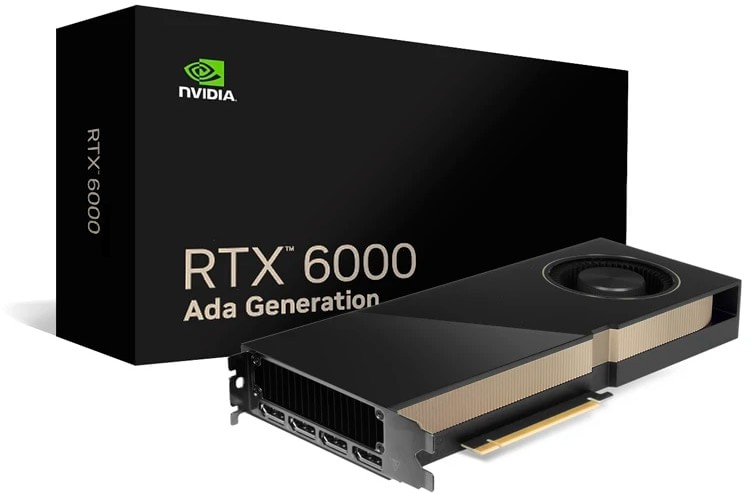NVIDIA RTX 6000 Ada Generation - Does It Get Better Than This?
Published: 05-08-2024

Image Credit: Leadtek
The NVIDIA RTX 6000 Ada Generation marks a significant leap forward in graphics technology. As the successor to the Ampere-based RTX A6000, it offers substantial improvements in performance, memory, and energy efficiency. Named after the pioneering mathematician Ada Lovelace, this GPU integrates advanced features tailored for high-end computing tasks.
What’s the “Ada Generation?”
The "Ada Generation" refers to the latest generation of NVIDIA graphics processing units (GPUs) that are built on the Ada Lovelace architecture. Named after Ada Lovelace, who is often credited as the first computer programmer.
The Ada Lovelace architecture is designed to offer substantial improvements in performance, power efficiency, and AI computing compared to its predecessors. This makes it particularly suitable for high-end computing tasks, including professional visualization, gaming, and AI applications.
Most importantly, this card should not be confused with the NVIDIA Quadro RTX 6000 which runs on the older Turing architecture and has only half the VRAM.
What’s RTX 6000 Got Under the Hood?
NVIDIA has tweaked, improved, and reinvented multiple aspects of the GPU technology in the RTX 6000, making it the most cutting-edge professional GPU on the market as of this writing.
The headlining improvements are:
Third-Generation RT Cores: Enhanced ray tracing cores deliver more realistic lighting and shadow effects, crucial for creating lifelike 3D environments. Ray tracing in live rendering is becoming more and more useful in many professional contexts, so you can bet extra real-time RT horsepower will come in handy.
Fourth-Generation Tensor Cores: These cores accelerate AI-driven processes, making them indispensable for AI research and neural network training. AI technology is touching absolutely everything and will simply become more essential as time goes by. The latest Ada professional GPUs turbo-charge AI-related tensor calculations far beyond what’s possible with other processors.
Next-Generation CUDA Cores: Improved CUDA cores boost overall computation speed, driving faster processing for complex simulations and analyses. CUDA is the industry standard for GPGPU software applications, and the RTX 6000 will blaze through this code like nothing else.
48GB of GDDR6 Memory: With a substantial 48GB of high-speed GDDR6 memory, the RTX 6000 can handle massive datasets and intricate graphics tasks with ease. Perhaps even more importantly, generative AI models need a ton of VRAM, and if you want to develop and/or run these AI models locally, you’ll need as much VRAM as you can get.
The theoretical performance numbers are mind-blowing, with 91.1 TFLOPs of single-precision performance, and 210.6 ray tracing TFLOPs, and 1457 tensor TFLOPs. This is one heck of a GPU.
The Best Until Blackwell
As of this writing, for professional GPU users the RTX 6000 Ada Generation is as good as it gets, until we get professional GPUs based on Blackwell architecture. However, the RTX 6000 Ada Generation is not the fastest NVIDIA card or even the fastest Ada Lovelace card. That distinction goes to the RTX 4090, which is a high-end gaming GPU.
However, the 4090 only has half the VRAM, and of course does not come with the certification and pro-grade support and compatibility of the RTX 6000 Ada Generation. So if you’re working on mission-critical science and engineering tasks, we highly recommend spending the extra money for a professional card.
If, however, you’re doing content creation and don’t require bullet-proof math or 99% uptime, then speak to us about whether an RTX 4090 might be the better choice for your particular build.